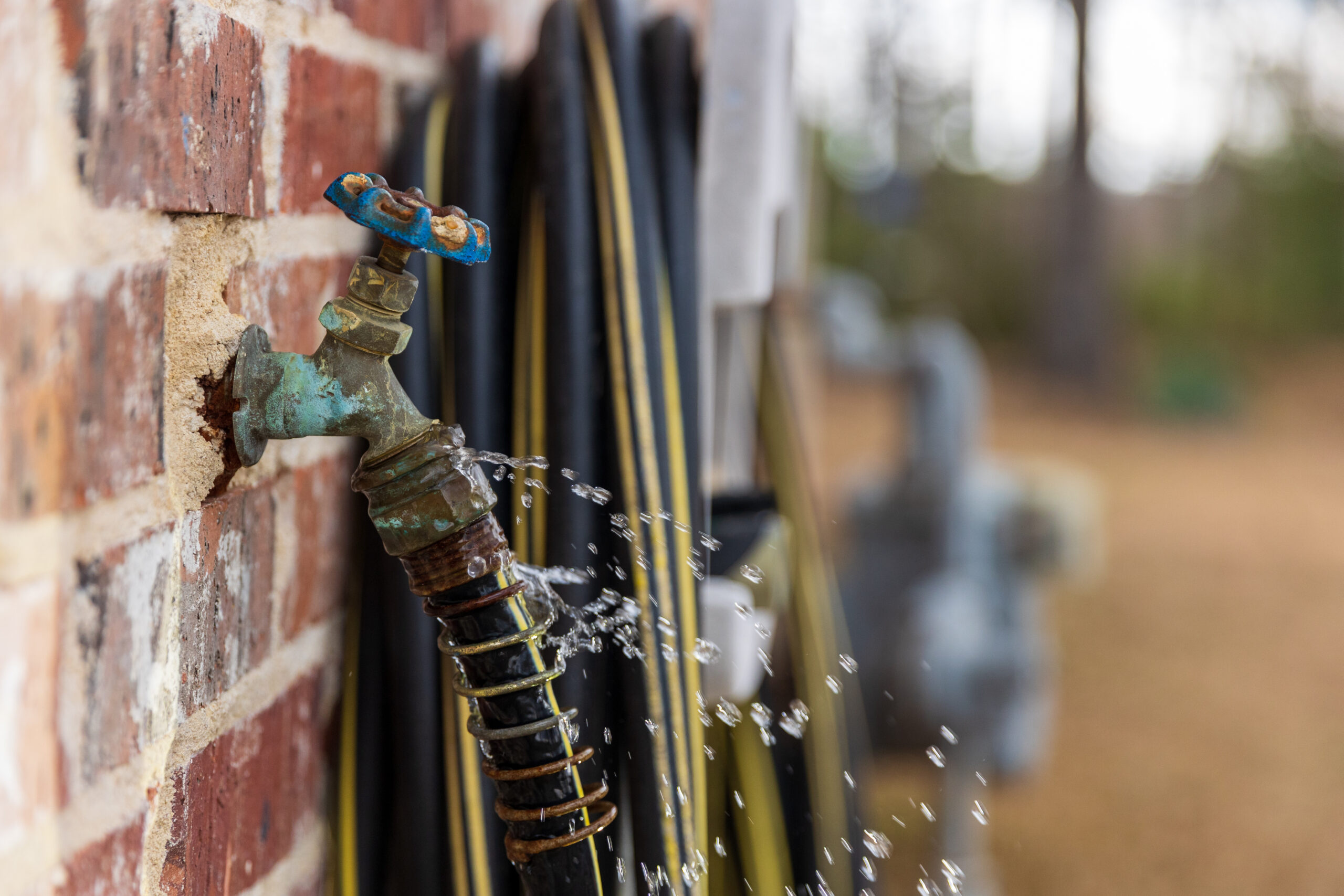From Drips to Disaster: Navigating Indoor and Outdoor Plumbing Leaks at Home
Plumbing leaks can range from a minor annoyance to a major catastrophe, causing damage to both indoor and outdoor spaces. From the subtle drip of a faucet to the sudden burst of a pipe, understanding how to navigate and address plumbing leaks is crucial for homeowners and property managers alike. In this blog post, we’ll explore the types of leaks that can occur both indoors and outdoors, the potential consequences of ignoring them, and practical steps to manage and prevent leaks before they escalate into disasters.
Indoor Plumbing Leaks
Indoor plumbing leaks are perhaps the most common and often occur in areas where water is regularly used, such as kitchens, bathrooms, and laundry rooms. Some common culprits include leaking faucets, dripping pipes, faulty toilet seals, and damaged water supply lines. While these leaks may start small, they can gradually worsen over time, leading to water damage, mold growth, and increased utility bills.
Detecting indoor plumbing leaks early is essential to prevent extensive damage. Signs of indoor leaks include water stains on walls or ceilings, musty odors, dampness or puddles around fixtures, and unexplained increases in water usage. If you suspect a leak, it’s crucial to act promptly to identify and repair the source before it causes further harm.
Indoor Plumbing Leak Early Dedication
- Faucets and Showerheads: Look out for dripping taps or showerheads caused by worn washers or mineral build-up. Even a small drip can waste lots of water over time.
- Toilets: Keep an ear out for silent leaks from the toilet. These often stem from issues with the flapper, fill valve, or overflow pipe.
- Washing Machine and Dishwasher: Check for puddles beneath these appliances, indicating leaks in the supply lines, drain hoses, or door gaskets.
- Water Heater: Watch for leaks around the water heater, which could signal a failing tank or pressure relief valve.
- Pipes: Be wary of hidden leaks behind walls or under floors, indicated by bulging walls, peeling paint, or mysterious water stains.
Outdoor Plumbing Leaks
Outdoor plumbing leaks can be equally troublesome, affecting irrigation systems, outdoor faucets, and underground piping. These leaks are often harder to detect since they may go unnoticed until significant damage has occurred. Common outdoor leaks include broken sprinkler heads, leaking hoses, and damaged underground pipes due to tree roots or shifting soil.
Detecting outdoor leaks may require a more vigilant approach. Look for soggy or sunken areas in your yard, unexplained increases in water bills, or unusually green patches of grass. If you notice any of these signs, it’s essential to investigate further to pinpoint the source of the leak and prevent water waste and potential landscape damage.
Outdoor Plumbing Leak Early Dedication
- Underground Pipes: Keep an eye on your water bill and look out for soggy spots on your lawn, especially near the house, which might indicate a leak in the underground supply line.
- Hose Bibs and Irrigation Systems: Check outdoor faucets and sprinkler connections for cracks or wear that could lead to water waste and foundation erosion.
- Foundation Leaks: Address any water pooling near your foundation after heavy rain, as it could signal cracks allowing rainwater to seep in.
Managing and Preventing Leaks
Taking proactive measures to manage and prevent plumbing leaks is key to safeguarding your property and reducing water waste. Here are some practical steps you can take:
Taking Action:
- Prompt Repairs: Address leaks promptly to prevent them from worsening and causing more extensive damage.
- Turn Off the Water: Find the shut-off valve for the leaking fixture or appliance and stop the flow of water to prevent further damage.
- DIY Repairs: Simple leaks like those from faucets can often be fixed with replacement washers and gaskets from your local hardware store.
- Call a Plumber: If you’re unsure or dealing with a complex leak, don’t hesitate to call a licensed plumber for professional help.
- Landscape Carefully: Be mindful of planting trees or shrubs near underground pipes to avoid root damage.
Prevention Tips:
- Regular Inspections: both routine self-inspections of plumbing fixtures, pipes, and irrigation systems, and yearly check-ups with qualified professionals, are recommended.
- Install Leak Detection Devices: Utilize smart leak detection devices that can alert you to potential leaks and shut off water automatically.
- Insulate Pipes: Protect exposed pipes from freezing and bursting in colder climates by insulating them properly.
- Upgrade Fixtures: Consider installing water-efficient fixtures and appliances to reduce the risk of leaks and conserve water.
- Monitor Water Meter: Keep an eye on your water meter readings to catch sudden increases, which could signal a hidden leak.
By staying vigilant and taking proactive steps, you can safeguard your home from the damaging effects of water leaks. Remember, a little prevention goes a long way towards maintaining a healthy, leak-free home.
Plumbing leaks, whether indoors or outdoors, have the potential to escalate from minor nuisances to significant disasters if left unchecked. By staying vigilant, addressing leaks promptly, and implementing preventive measures, homeowners can protect their property, conserve water, and mitigate environmental impact. Remember, from drips to disasters, proactive maintenance is key to keeping your plumbing system in optimal condition.
See more related blogs:
Stop Plumbing Panic: Easy Checklist Hacks for a Smooth-Flowing Home
Winter Wonderland or Plumbing Nightmare? Avoid the Hassle of Frozen Pipes

